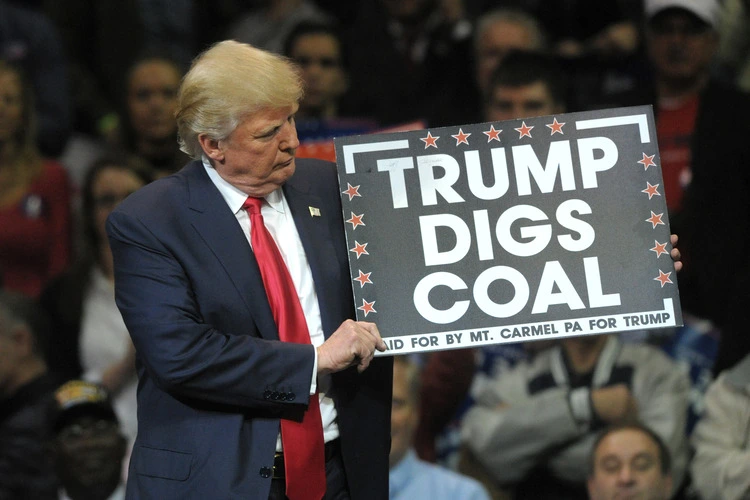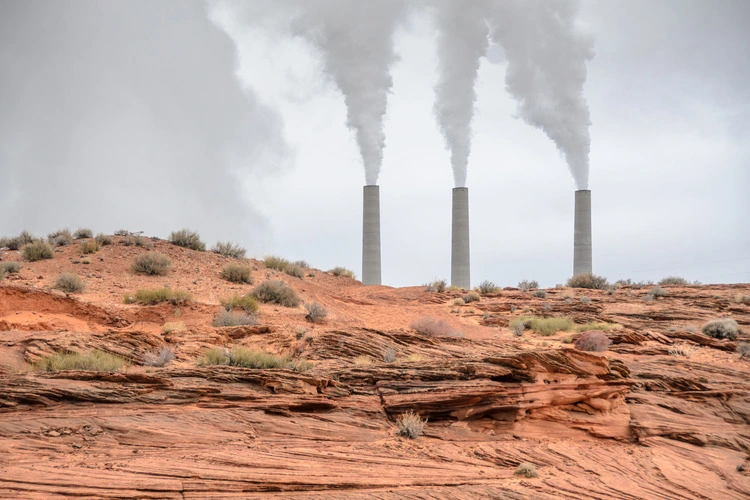
While Trump may be signalling for a return to coal power, is it really that easy to turn the tide on a dwindling industry in the US?
By
To President Donald Trump, coal is ‘beautiful’ and ‘clean’. To the environment, the fossil fuel is neither of those things. It’s this tension between the President’s view on the most planet-polluting fossil fuel – and the reality of its environmental impact – which is prompting some to consider what direction the US will head in next on coal.
Enjoying this article? Check out our related reads:
Currently, the main benefits to the US eradicating coal are economic and environmental. There are 210 coal plants across the US – 209 of which – representing 99 per cent of its total – are more expensive to run than comparable green energy sources, like solar or wind. The financial savings of halting coal power in the US would be vast, generating more than $586 billion in new investment across the country.
The environmental benefits would also be significant if coal use were stopped: the non-renewable energy source is by far the worst fuel when it comes to climate change, releasing more carbon dioxide compared to oil or gas when it is burned.
But, with Trump issuing executive orders that lift regulations of fossil fuel development, Biden’s plans for a carbon-free power sector by 2035 hang in the balance. Is it possible for America to reap the benefits of releasing its grip on the coal industry, or is such a reality now doomed?
Coal-powered data centres
Previously, Trump touted coal as the ideal solution for the rising demand in electricity – a surge in part thanks to energy-hungry data centres that power artificial intelligence systems such as ChatGPT and Google Gemini. One reason for this is coal’s ability to produce energy constantly, unlike renewable resources such as solar, which require particular conditions to operate. Of course, the environmental trade-off between the two is vast, but it is coal’s quick and reliable ability to produce large amounts of energy that is keeping it in Trump’s eyeline.
Only last month did the President suggest rolling back Biden’s plans for a carbon-free US and building new coal plants dedicated to powering these data centres. If constructed, these would be some of the first new coal plants the US has seen in more than a decade.
However, while Trump may envision a future in which swathes of US energy come from coal, the reality of the energy market sharply differs.
In the US, coal production has been declining for the last several decades. In 2023, 16 per cent of the US’s electricity came from coal plants, a figure down from more than half compared to 1990. A range of factors have caused such a decrease, from environmental regulations to the revolution of fracking, which led to natural gas prices being driven down.
Consequently, building the coal infrastructure Trump wants would be a journey likely fraught with bumps in the road ahead. In light of environmental considerations and the boom of the clean energy sector, many investors may see coal as a risky and thus unappealing investment and could choose to divert their cash to greener alternatives such as solar or wind.

Additionally, the companies that own AI data centres – such as Google and Meta – must navigate a pivotal balance between energy demands and following through on their own climate commitments, said director of climate policy at the Sierra Club Patrick Drupp. As such, using coal may be less attractive to them.
‘It’s kind of been shown over the last three administrations [that] even the president of the United States can’t change markets, the trend for coal,’ said University of Wyoming Economics professor Rob Godby. For Godby, Trump’s plans to encourage coal growth won’t outpace the clear downward trend of US coal production.
‘The long-term trend is hard to get out of,’ he said.
Reversing retirement on coal plants
So, if building new coal plants could become a difficult reality to enact, there are still other ways Trump could prolong fossil fuel use in the US. One such method is extending the lifespan of coal plants that already exist in the country.
Under Biden, many coal and natural gas plants were incentivised to close prior to 2032, as these plants did not have to change any of their operations to fit environmentally-conscious regulations. Any that were planned to operate after this date would have been subjected to a regulation that cut or captured 90 per cent of their carbon dioxide emissions.

Now, with Trump likely to roll back these regulations enforced by the Democrat party, this incentive to close earlier may be gone. Already, several smaller plants across the country are prolonging their operations: one in Illinois with a proposed close date of this year is now in operation until 2027.
This may be the workaround solution that Trump could find to power AI data centres. While building new coal plants may prove tricky, it could be easier to reverse the retirement of a plant about to close, especially against the backdrop of rising energy demands for these data centres.
Prior to Trump’s election, the largest coal plant in America – Plant Bowen in Georgia – had intended to close by 2035 at the latest. Now, it may be running for longer due to demand from data centres.
What can the US expect?
It’s difficult to ascertain the extent to which Trump’s presidency – and his views on coal – will impact the US’s use of the fossil fuel. While it is true that Trump’s more positive viewpoint on coal differs from its dwindling prevalence as an energy source, a scenario in which he weakens environmental regulations on coal plants could create hospitable conditions for their continued operations. Against the backdrop of rising energy demands due to AI data centres, this too could spur on coal plants to continue firing away.
For many, however, coal is quickly shaping up to become an energy source of the past, regardless of moves made by the White House.
‘Coal is fundamentally uneconomic. Any need that isn’t met by wind or solar or battery storage will for the most part be met with natural gas, and coal will still be a distant fourth resource in that mix,’ said senior researcher at the Ohio River Valley Institute Sean O’Leary.
As Trump continues to pass executive orders, it remains to be seen which will stick and which will be fiercely opposed.




